I don’t mean to give the impression that I’m careless about what I write - one of the joys of writing is that it takes my full attention - I only mean to say that I am not writing to a schedule.
The combination of having a compulsive need to write and no pressing requirement to publish means that I always have several unfinished stories on my C Drive at any given time. As of this morning, my WIP file (Work In Progress file – hey, I’m a management consultant, of course I have a WIP file) has thirty stories in it.
When I feel the need to write, usually when I’m away from home on business, often in the early hours of the morning, I open up my WIP file and browse the stories until I feel one call to me, demanding completion.
Sometimes I’ll open a story, make some progress or do some tidying up and then pop it back in the WIP file until the next time it calls to me. Sometimes I open story after story without stirring my own interest. Then, if I’m lucky, a new story will push its way to the front of my mind. If I’m very lucky, most of the story will be in my head already, waiting to spill out over the keyboard. The only question then is whether I can write for long enough to get it all down before the creative tide ebbs.
But most new stories aren’t like that. They give up little pieces of themselves, like young girls wearing clothes that hide and display at the same time. I capture what I can- plot, dialogue, imagery, character - and leave myself clues about what I haven’t yet seen – what might happen next, how the characters feel, phrases they might use, images that aren’t yet connected to the body of the text. Think of them as jig-saw puzzle pieces that have been selected because they’re probably pieces of sky but you can’t link them yet and besides they might turn out to be part of the ocean.
Recently I’ve been trying to figure out what it is that gets some stories completed while others remain as creative driftwood, just attractive enough for you not to want to throw them away but not really useful for anything.
For those with an editor to placate, bills to pay and a deadline to meet, I suspect the answer is focus and will power. That’s how I turn my words into cash in my day job.
I’ve been looking for a different solution for writing stories: one more in keeping with my dilettante motivations. It seems to me that sailing provides the metaphor here. Sailors go where the wind blows. The speed they travel at and their ability to choose a course depends at their skill on harnessing the wind and their ability to navigate.
I need to find a way of harnessing the creative breeze so that it will carry me further and with greater control.
So, being a management consultant, I analysed the data and developed a hypothesis. Don’t worry, I won’t be using gant charts or PowerPoint slides.
I decided that there are three parts to writing a story and I couldn’t resist the alliterative opportunity of having them all start with F.
So here are the Mike Kimera 3 Fs of story writing: Finding, Fixing, Finishing
Finding is about the new, the joy of the blank page, the endless possibilities of beginnings, the buzz you get from making new connections to old ideas. Finding involves reaching into the great swirl of stimulus and response just below the conscious surface of my mind and pulling out things and making patterns. It’s a little like fishing – you need to be still and calm so as not to spook your prey and it helps if you can cast a hook to catch them on. Finding is also a little like fresco painting: you have to act boldly before the plaster dries and nothing more can be added. I Find best when my mind is open and my emotions are engaged and when I feel so full that if I don’t write something I will burst. I Find badly or not at all when I’m empty or jaded or tired or depressed. If I keep trying to Find when that mood is on me I either come away empty-handed or I fool myself into seeing silver where there is only tin. In the first case I feel sterile and talentless and in the second I feel foolish and frustrated.
When the glamour of the initial Find wears off you realize that sparkle alone is not enough. A good story structures imagery, dialogue, character, plot and pace to create something coherent, something that presents the sparkle effortlessly. The structure is something that should not draw attention to itself but is absolutely fundamental to what’s going on.
One of the reasons that a story lingers on my C Drive is that the underlying structure is broken. Something doesn’t work. The next piece of the story refuses to be grafted on to what went before or else simply refuses to reveal itself. This is where Fixing comes in.
Fixing is an ineffable process; a hybrid born of craft and intuition. A sculptor was once asked how she turned a piece of rough marble into a life-like statue of a dog. She replied that she simply cut away all the stone that wasn’t dog. This kind of intuition helps you sense where there story is broken and how it needs to be reset to grow whole. Craft provides the tools to make the repairs. Sometimes the break is because the narrative thrust has run out of steam and the whole thing is taking too long. Sometimes the plot dead-ends or you have no idea what the character will do next. Finding the break is a little like searching for the puncture on tire that seems to be whole but deflates under pressure. Once my intuitive sense of the story locates the break, I lay out my craft tools to fix it: can I change the point of view, edit down the text, put more exposition in dialog, change the tense or the timeline or simply leave stuff out. I Fix best when I’m focused and patient and intolerant of imperfection. I can’t Fix in a hurry. I can’t Fix until I have some distance from the story.
For me, the hardest of the three Fs is Finishing. Finishing is the eldest child in the family, the sensible one that is right more often than they are fun. A person can lose themselves in endless rounds of Finding and Fixing because they are fun to do. But without Finishing, Finding is just a game and Fixing degenerates into tinkering, a triumph of craft over purpose. Most stories, when you read them, have a beginning, a middle and an end. But when you write them, stories are not at all like that. The middle demands that you move it, the beginning wants another turn and the end refuses to come when you call.
Finishing is about discipline and clarity. It is how writers keep their implied contract with the readers. Mondrian’s work has been described as taking a line for a walk. The writer takes the reader on a journey and has the responsibility for deciding when the destination has been reached. Finishing involves being able to hold the whole story in your mind and survey its proportions. Like Fixing, it involves intuition – this time of the “is it done yet?” kind. In some ways Finishing is the antithesis of Finding. It is about resolving probabilities to 1 or O not about extending the curve.
Finishing requires judgment and confidence. If Finding is infatuation with a new love, Finishing is affection for a long term friend. I Finish best when I am alert but not excited. When I feel the pull or structure and order. I Finish badly when I am frustrated or bored or out of time. In those circumstances I end the story rather than finish it.
So how does a dilettante like myself use the three Fs to get produce stories without feeling like I’m back at work? The first step is to be clear on which F I’m going to use today – each F is a sail I can catch the wind with but I can’t put up two sails at once.. The next step is being able to link my mood, my reason for writing today, to the appropriate F, there’s no point trying Find when I’m tired, or Fix when I’m urgent or Finish when I’m still in the love with the idea.



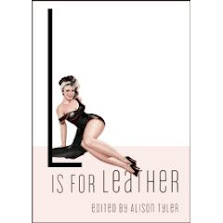



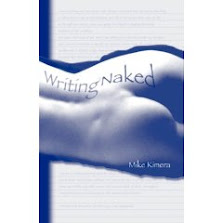

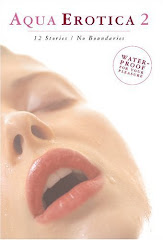

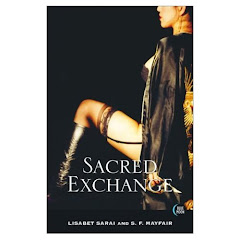

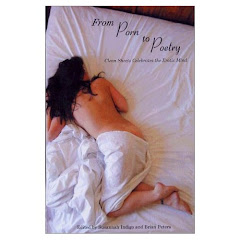



2 comments:
I read this first on ERWA, but am glad to have had the opportunity to read it again. The 3 Fs make much sense and are not unlike three bulleted objectives of a presentation, which perhaps is your point. I would have liked to understand the Fixing section better. It is the most troublesome of the three for me, and I'm eager to have its mysteries sorted out. Perhaps at some point you will write more about this most difficult of writerly activities. Seneca
Probably by now you've established a method of working that is dependable and continuous. That is good. For me, a lot of stories I have devoted attention to are things I wrote 10 or 15 years ago. In addition to having to get back into the mindset I was originally in, I have to retype the story and practically write the story over again. It's like a resurrection process; I feel I'm almost trapped by my past.
(Fortunately this year I've gotten around to working on two brand new stories, reminding me of how it feels to write something from scratch. It is a new almost scary feeling).
I realize your post was about writing in a general way, but have you noticed anything peculiar to writing erotica? Such as: more impulsive writing, more self-censorship, more restraint in combating overwriting?
Post a Comment